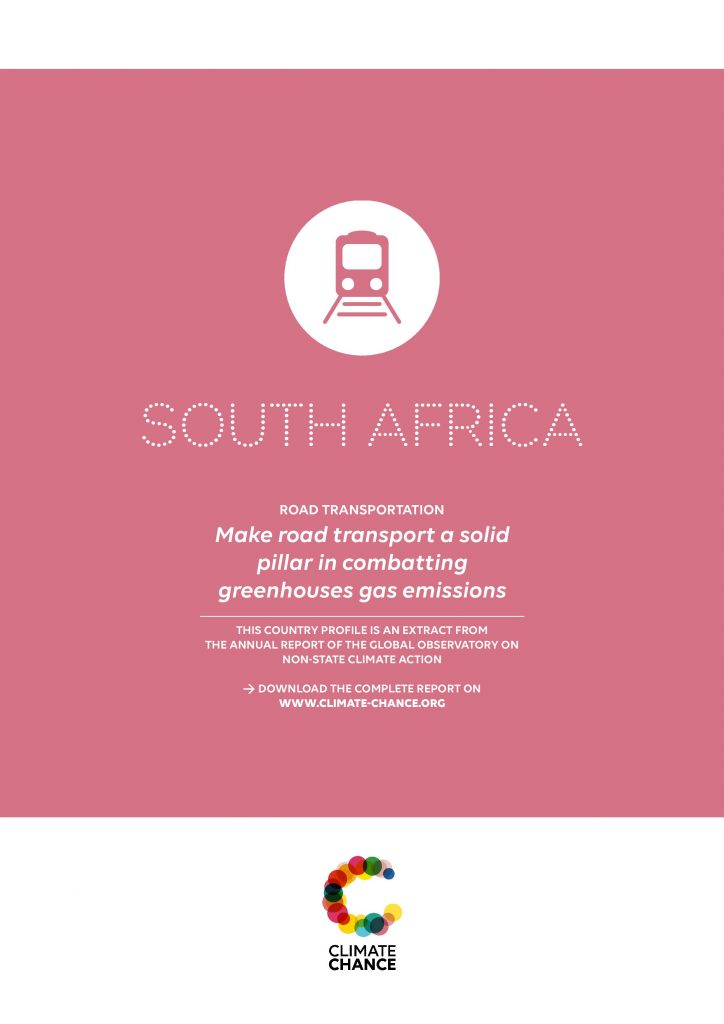South Africa • Making road transport a solid pillar in combating greenhouse gas emissions
Following the example of the international community in response to the climate challenge, the South African government aims to reduce national carbon dioxide (CO2) emissions by 34% in 2020 and 42% by 2030.

2018
South Africa
Alioune Thiam • Transport and Urban Mobility Expert, Eco-Access
Introduction
Following the example of the international community in response to the climate challenge, the South African government aims to reduce national carbon dioxide (CO2) emissions by 34% in 2020 and 42% by 2030. The transport sector, one of the main contributors to atmospheric pollution and the 2nd emitter of CO2, is one of the key sectors of this fight. In road transport in particular, which includes freight and passenger transportation, the technologies currently used and the modes of operation are not in line with these objectives and must be reconsidered.
In this regard, the state and municipal authorities have taken various initiatives to meet the targets set. The materials used and the modes of operation are constantly being re-examined. Indeed, support for the renewable energy sector through investment programmes and substantial subsidies is expected to make compelling contributions to reducing greenhouse gas (GHG) emissions in the South African road transport sector. This paper presents the evolution of emissions in the road transport sub-sector in South Africa, the explanatory factors for the trends observed and the mitigation actions being carried out.
Contents
1 • The road transport sub-sector is a key contributor of emissions in the sector
• The emissions of the road transport sub-sector are strongly correlated with diesel consumption
• The reason: urban forms and modes of travel
2 • The state’s intentions are still rather timid
• Adherence to international agreements and a focus on the most polluting sectors
• Particular attention paid to the transport sector, especially road transport, through innovative mechanisms
3 • Remarkable contributions from private actors
• High participation of non-state actors
4 • Strategies of local public actors
• Coordinating the town planning and transport policies to reduce the number of journeys
• Paradigm change following the urban public transport crisis: towards sustainable mobility
• Innovations in the public transport sector
• A growing awareness in civil society and in the general public in favour of hybrid and electric vehicles
Conclusion
The stabilization of CO2 emissions from the road transport sub-sector in Africa in the last few years is the result of rising environmental awareness in the central State and local authorities, with the strong support of non-state actors.
However, for all the encouragement it provides, this drive from the state requires more commitments and concrete actions on the challenges faced in terms of reducing greenhouse gases generated by road transport, which is the greatest polluter in the transport sector. Indeed, the emissions levels of the road transport sub-sector remain high and the potential for reduction is significant.
Also, the question should be raised as to whether, at the current rate of energy transition in the road transport sector and also in terms of individual and collective awareness of the issue, the objective of using 100% renewable energy in the transport sub-sector at the 2050 horizon is in fact feasible.



